Jason Forney AIA

Name: Jason Forney AIA LEED AP
Job title and company: Principal, Bruner/Cott Architects & Planners (BCA)
Degree(s): BED-A, North Carolina State University; BArch, North Carolina State University
Professional interests:
I believe that honoring a mixture of old and new creates the most dynamic and vibrant places. I’m interested in creatively reusing existing structures in ways that embrace their future and reimagine the ways these buildings serve their communities—especially those quintessential structures that distinguish regions. I also like to push the limits of building performance in both historic structures and new construction, from high-energy performance and water systems to sustainably and ethically sourced materials. These are areas where buildings can make positive contributions to our environment.
What are you working on now?
I’m working on several projects right now. Bruner/Cott is currently in construction on the third phase of MASS MoCA in North Adams, Massachusetts, transforming 130,000 square feet of mill building into galleries centered on long-term exhibits from seminal contemporary artists James Turrell, Laurie Anderson, Jenny Holzer, Louise Bourgeois, and Robert Rauschenberg. I’m also working on a new welcome center and admissions building at Hampshire College in Amherst, Massachusetts, which is pursuing Living Building Challenge (LBC) certification and will be net-positive energy, net-zero water, and comply with the LBC’s Materials Red List. I’ve got two planning projects I’m excited about: one for a new residential village for a large university, and a knowledge and wellness commons for a small liberal arts college. I’m very proud of the three projects I was involved with in 2015: the Lunder Arts Center at Lesley University in Porter Square, Cambridge, Massachusetts; a historic power plant that was reimagined as a student event space at Amherst College; and The Viridian, a new 342-unit apartment building overlooking Fenway Park.
What inspired you today?
On my way home tonight, I read Pope Francis’encyclical. I was inspired by his position on the “Right of the Environment” and the call to treat all human beings well.
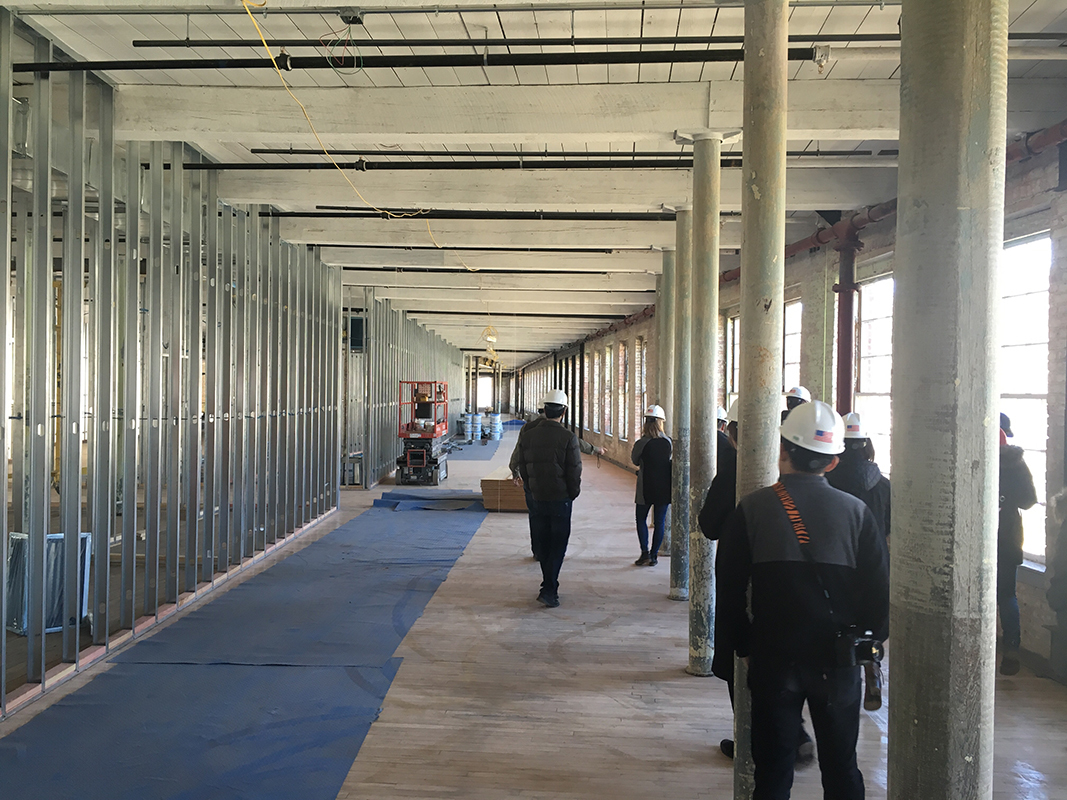
Above: Phase 3 expansion of MASS MoCA under construction. (Bruner/Cott)
What architectural buzzword would you kill?
Although not so buzzy, I’d replace the “adaptive” in “adaptive reuse.” I think our skill, talent, and imaginations have taken us beyond the notion of simply adapting old buildings. More often, we are transforming them.
When you’re working, do you discuss or exchange ideas with your colleagues?
Bruner/Cott’s design process is very collaborative, which works well for me. I think the ideal process depends on ideas from everyone. It’s an ongoing conversation, where each new concept inspires another even more creative than the last. On my projects, the team begins by creating a common set of goals for the project, for individual team members, and for the firm as a whole, and a central idea against which to make decisions and measure success. It requires capable and flexible leadership to guide this process and makes sure the ideas are strongly linked together, but the results are thoughtful, creative, and responsive.
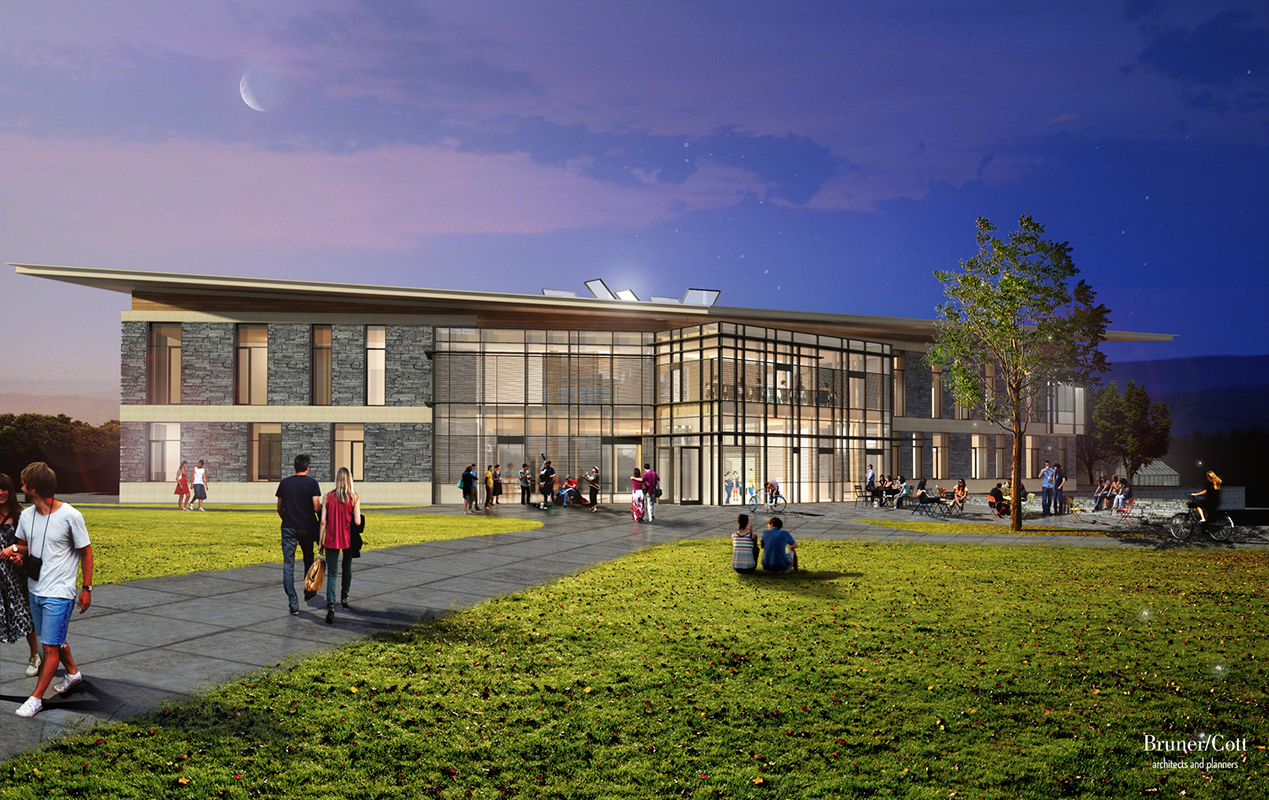
Above: R.W.Kern Center at Hampshire College on track to meet Living Building Challenge and transform center of campus. (Bruner/Cott)
What are you reading?
Angle of Repose by Wallace Stegner. It won the Pulitzer Prize for Fiction the year I was born. “Angle of repose” is the steepest angle a pile of granular material can be piled before it begins to slide. How can humans find the right angle where they are pushing their limits, right on the edge of control? I also picked up the The Nine Nations of North America by Joel Garreau from a dusty bookshelf in a vacation home. It was written in 1981 and proposes that our continent is not really separate states and countries but more like regions that are joined by core values, connection to their biome, and history. It’s fascinating and still relevant in 2016. Interestingly, it includes interviews with Boston Society of Architects/AIA members Lee Cott FAIA (a young restoration architect at the time) and Jean Carroon FAIA (then a river guide in Oregon).
Do you sketch by hand or digitally?
Both, but I think the best ideas come by hand. I’m a visual thinker that way. My favorite way to sketch is with yellow trace or brown paper, black pens, and a white pencil.
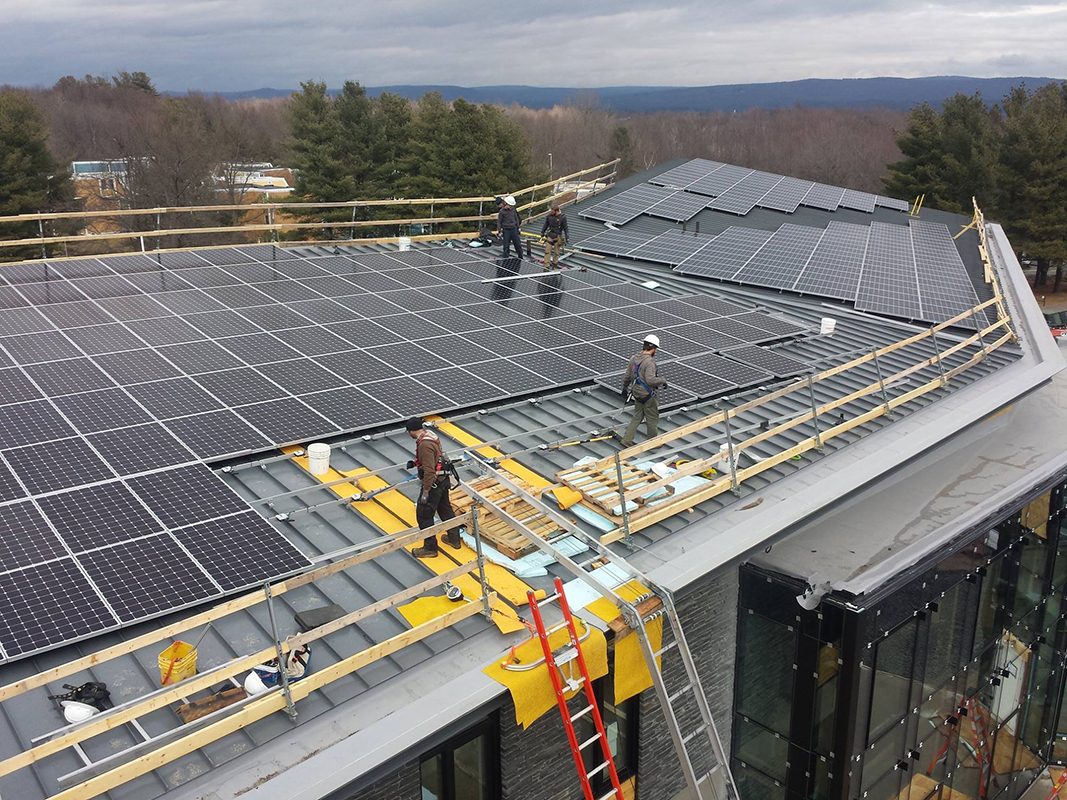
Above: Installation of 100 kw solar array on R.W.Center (Hampshire College)
Has your career taken you anywhere you didn’t expect?
Recently, I’ve really enjoyed visiting artists’ studios and installations as part of the ongoing MASS MoCA expansion. It’s been fascinating to see the creative spaces and projects that are part of these artists’ practices.
Can design save the world?
I hope so. We’re currently working on a project with Jason McLennan, author of the Living Building Challenge, and I share his belief that we only have a short time to change the way we think about buildings. Luckily, we already have the knowledge and the technology to design regenerative buildings. This is an incredibly important conversation in the design community and one that I am really passionate about.
Who or what deserves credit for your success?
First, I think design school showed me how to think critically, understand conceptual thinking, and see how individual decisions support larger goals. I’ve been lucky to have great mentors at Bruner/Cott, including Simeon Bruner, Lee Cott FAIA, Henry Moss AIA, Lynne Brooks AIA, and Norris Strawbridge FAIA. Prior to joining BCA, I learned a lot from some generous and talented people at Kliment Halsband Architects in New York City. I am heavily influenced by my family as well. My grandmother taught me the value of keeping and working with old things. She and my mother helped me to understand how to work well with people. My father was trained as an engineer and is creative and inventive—and an exceptionally hard worker. My wife and children inspire me and give me new ideas and renewed energy every day.
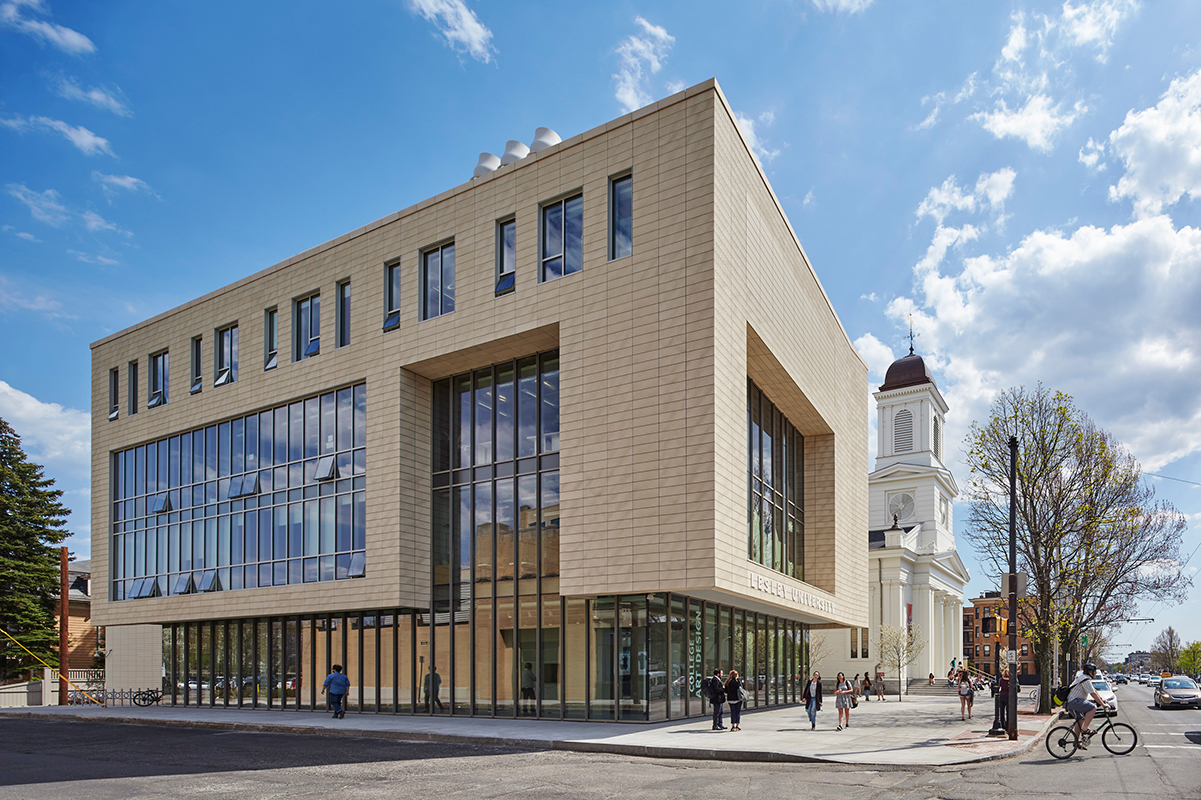
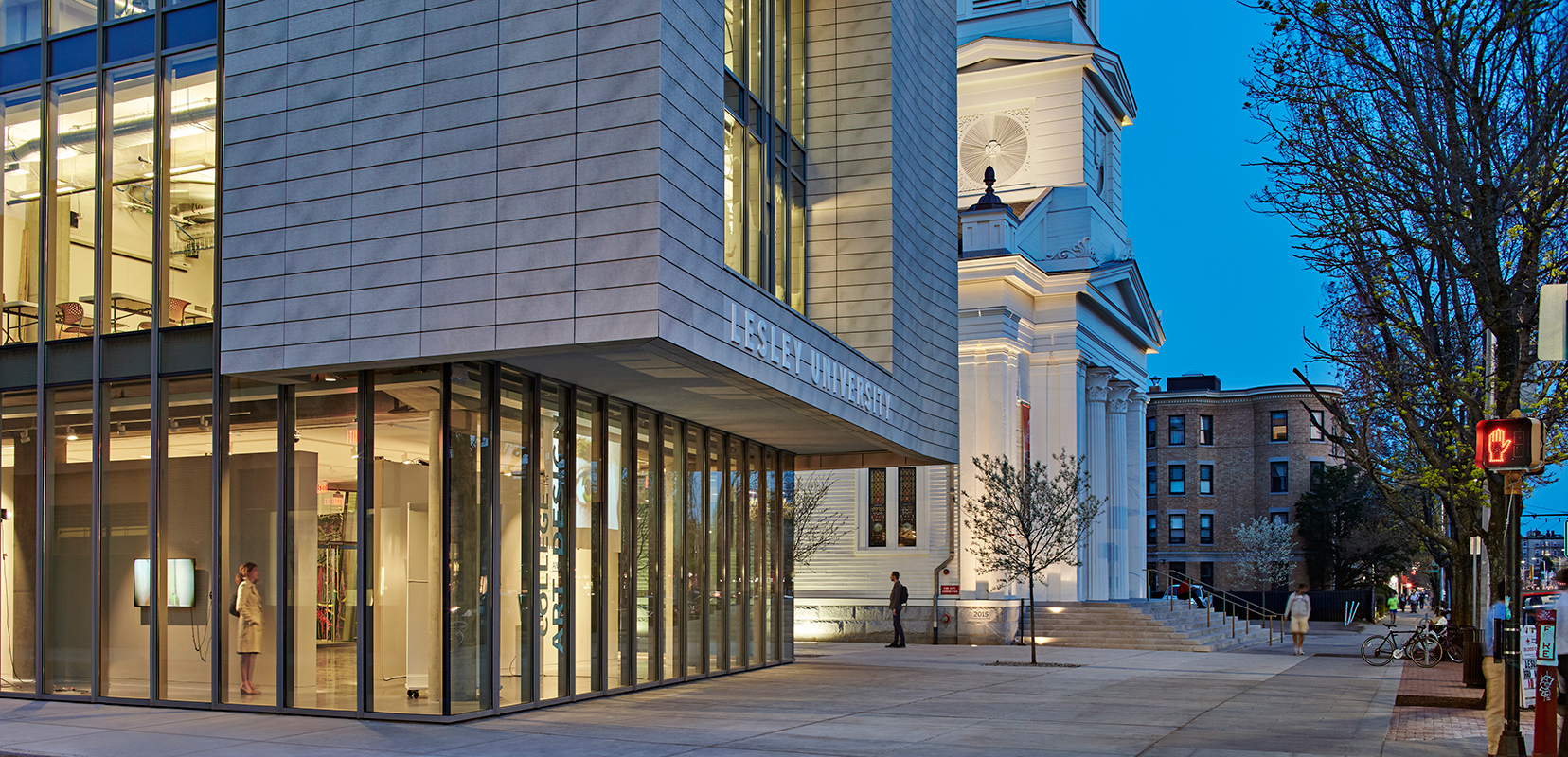
Above: Lesley University’s Lunder Art Center in Porter Square (Robert Benson)
Your least favorite college class?
I only had to take two math classes, but one of them was called “Finite Math.” It was like word problem hell with matrices, probability, and sets.
If you could give the you-of-10-years-ago advice, what would it be?
Every choice you make leads to the next thing. Choose wisely.
Your favorite Boston-area structure?
I have a fondness for the Modern masters—Alvar Aalto’s Baker House and Eero Saarinen’s MIT Chapel at the Massachusetts Institute of Technology; Gropius House; Le Corbusier’s Carpenter Center for the Visual Arts. A great friend and I visited those buildings on spring break in college—and we both moved to Boston.
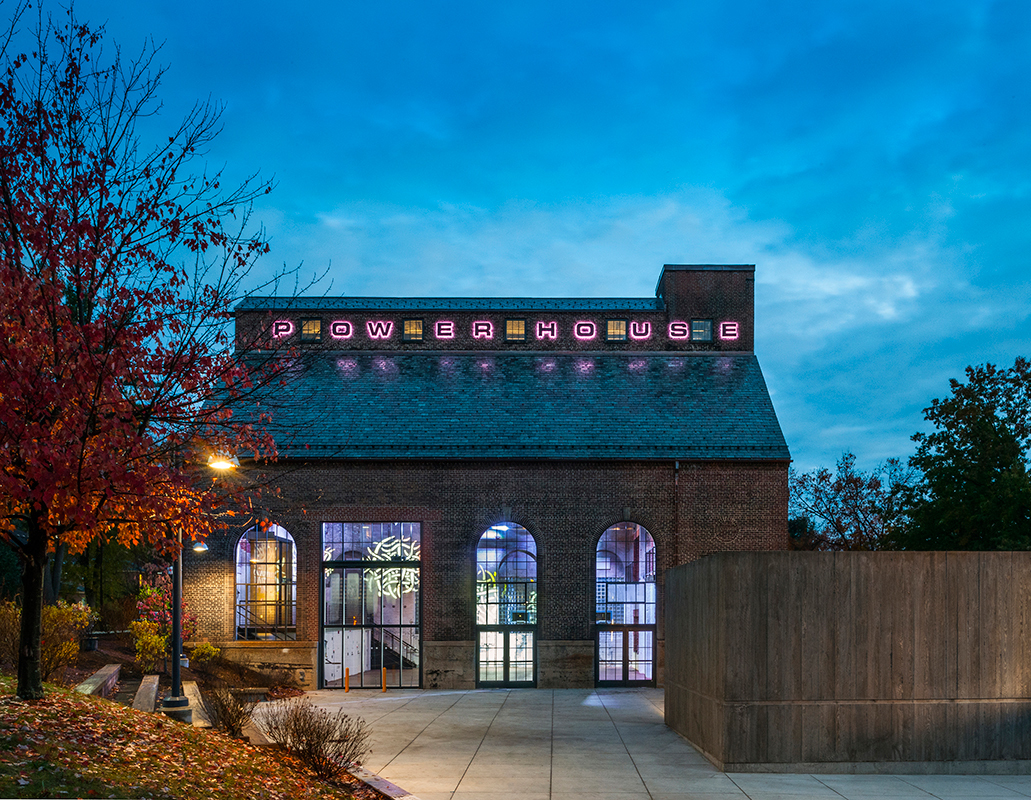
Above: Amherst College Powerhouse (David Lamb)

